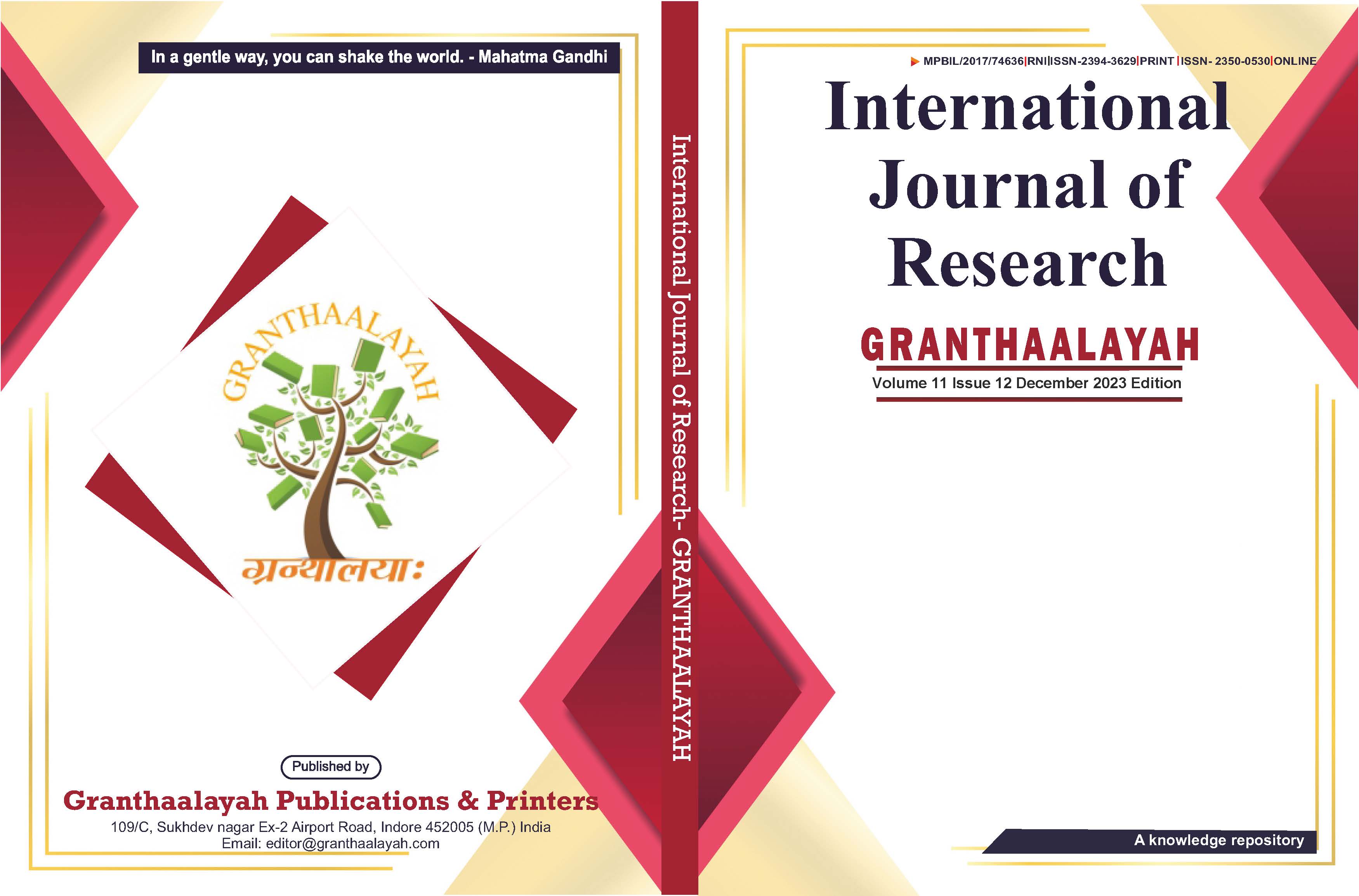HANDWRITTEN DIGIT RECOGNITION USING MACHINE LEARNING AND DEEP LEARNING TECHNIQUES: A COMPARATIVE STUDY OF SVM, KNN, RFC, AND CNN MODELS
DOI:
https://doi.org/10.29121/granthaalayah.v11.i12.2023.6111Keywords:
Svm, Knn, Rfc, Cnn Models, Orientation, Automated, Real-World ApplicationsAbstract [English]
Handwritten digit recognition is a significant and challenging problem in the field of pattern recognition and machine learning. The variability in digit size, thickness, orientation, and positioning—combined with the diverse writing styles of individuals—introduces complexity in accurately identifying digits. This task plays a crucial role in numerous real-world applications such as automated check processing, postal address interpretation, and tax form digitization.
This project focuses on implementing classification algorithms to recognize handwritten digits. It explores the performance of several well-known machine learning models including Support Vector Machines (SVM), K-Nearest Neighbors (KNN), and Random Forest Classifiers (RFC), as well as a deep learning approach using a multilayer Convolutional Neural Network (CNN) built with Keras and powered by Theano and TensorFlow backends. Experimental results demonstrate that the CNN model achieved the highest accuracy of 98.70%, outperforming traditional algorithms such as SVM (97.91%), KNN (96.67%), and RFC (96.89%).
Downloads
References
Banks, J., & Salama, H. (2015). Real-Time Web Apps with WebSockets. Communications of the ACM, 58(9), 45–52.
Dong, C., Loy, C. C., He, K., & Tang, X. (2016). Image Super-Resolution Using Deep Convolutional Networks. IEEE Transactions on Pattern Analysis and Machine Intelligence. DOI: https://doi.org/10.1109/TPAMI.2015.2439281
Greff, K., Srivastava, R. K., Koutník, J., Steunebrink, B. R., & Schmidhuber, J. (2017). LSTM: A Search Space Odyssey. IEEE Transactions on Neural Networks and Learning Systems. DOI: https://doi.org/10.1109/TNNLS.2016.2582924
Hochreiter, S., & Schmidhuber, J. (1997). Long Short-Term Memory. Neural Computation, 9(8), 1735–1780. DOI: https://doi.org/10.1162/neco.1997.9.8.1735
Kalman, R. E. (1960). A New Approach to Linear Filtering and Prediction Problems. Journal of Basic Engineering, 82(1), 35–45. DOI: https://doi.org/10.1115/1.3662552
Kim, J., Lee, J. K., & Lee, K. M. (2016). Accurate Image Super-Resolution Using Very Deep Convolutional Networks. Proceedings of the IEEE Conference on Computer Vision and Pattern Recognition (CVPR). DOI: https://doi.org/10.1109/CVPR.2016.182
Kambil, A., & van Heck, E. (2002). Making Markets: How Firms Can Design and Profit from Online Auctions and Exchanges. Harvard Business Press.
LeCun, Y., Bottou, L., Bengio, Y., & Haffner, P. (1998). Gradient-Based Learning Applied to Document Recognition. Proceedings of the IEEE. DOI: https://doi.org/10.1109/5.726791
Lin, Y., & Li, M. (2018). Issues in Online Auction Systems. International Journal of Computer Applications.
Lubbers, P., & Greco, B. (2010). Pro HTML5 Programming: Powerful APIs for Richer Internet Application Development. Apress. DOI: https://doi.org/10.1007/978-1-4302-2791-5
OWASP Foundation. (2022). OWASP Top 10 – Web Application Security Risks. Retrieved from https://owasp.org
Sharma, A., & Dubey, N. (2020). Price Optimization in Online Auctions Using Deep Learning. Procedia Computer Science, 170, 1210–1217.
Wang, T., Yu, S., Zhang, L., & Liu, H. (2019). Auction Price Forecasting Using Hybrid Deep Learning and Filtering Models. IEEE Transactions on Industrial Informatics, 15(10), 5652–5661.
Wang, Y., Hidvégi, Z., & Whinston, A. (2005). Bidder Behavior in Online Auctions: A Review. Journal of Electronic Commerce Research.
W3C. (2021). Web Technologies Stack Overview. Retrieved from https://www.w3.org
Yuan, J., & Zhang, Q. (2017). Feature-Rich Auction Platforms: A Modular Approach. Electronic Commerce Research and Applications.
Yu, S., Zhang, L., & Liu, H. (2019). Auction Outcome Prediction Using LSTM Networks. Expert Systems with Applications, 135, 112–121.
Zhou, L., & Li, J. (2019). Auction Dynamics and Real-Time Corrections with Kalman Filters. Computational Economics, 53(1), 25–42.
Published
How to Cite
Issue
Section
License
Copyright (c) 2023 Yash kumar, Bhawna, Anupama, Gaurav, Md Danish

This work is licensed under a Creative Commons Attribution 4.0 International License.
With the licence CC-BY, authors retain the copyright, allowing anyone to download, reuse, re-print, modify, distribute, and/or copy their contribution. The work must be properly attributed to its author.
It is not necessary to ask for further permission from the author or journal board.
This journal provides immediate open access to its content on the principle that making research freely available to the public supports a greater global exchange of knowledge.






























